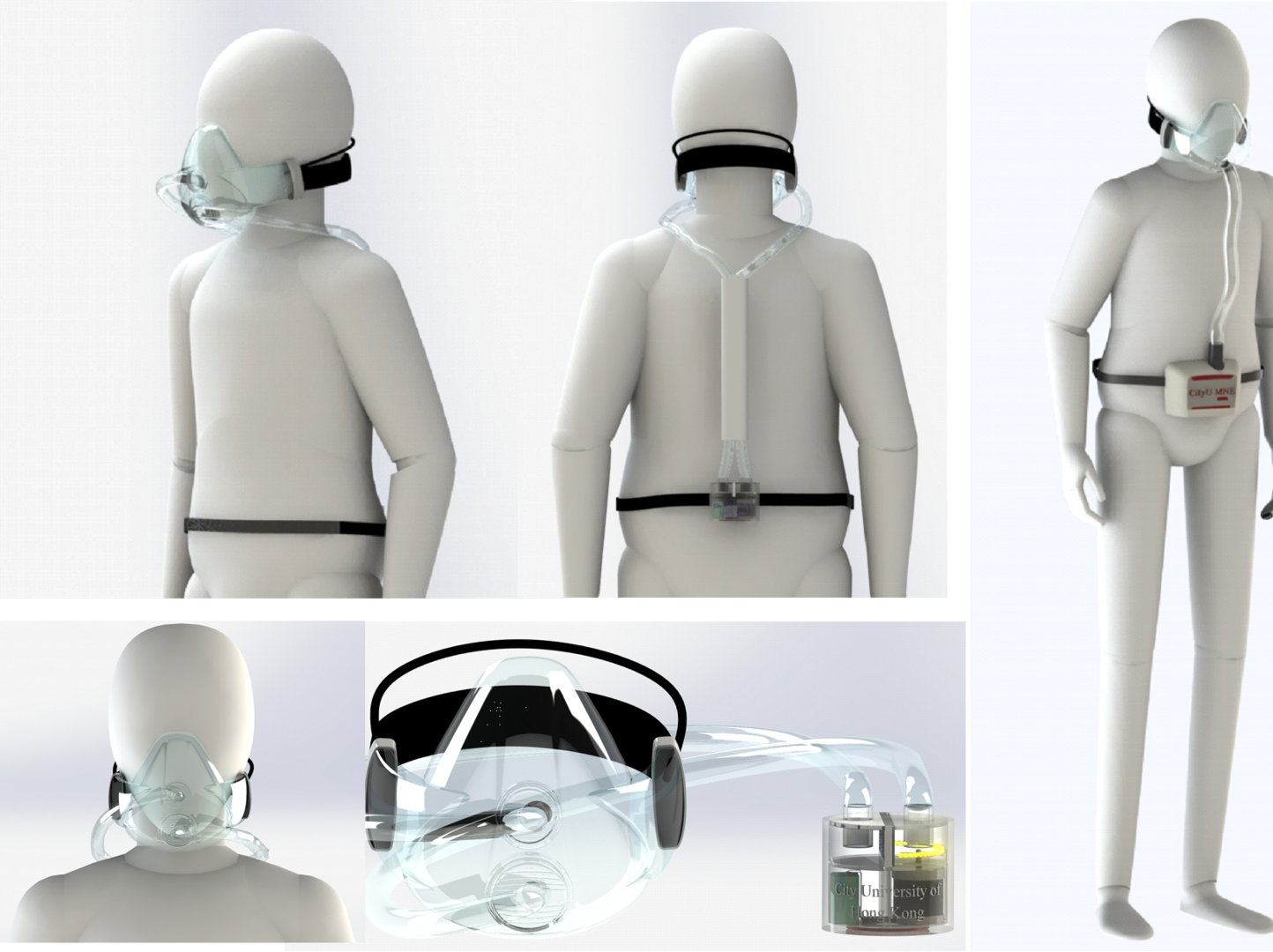
Opportunity
In the global COVID-19 pandemic, wearing masks is an important measure for reducing the risk of cross-infection. In particular, effective and comfortable masks or respirators are critical for healthcare workers (HCWs), many of whom have contracted COVID-19, in some cases leading to death. However, existing personal protective equipment (PPE)¬¬ has several limitations. For example, standard PPE leaves HCWs performing intubation at extremely high risk of exposure to the virus/aerosol. Also, droplets can remain on medical masks, increasing the risk of secondary transmission if not disposed of properly. The masks also contain plastics and are difficult to reuse and recycle, posing an environmental problem; and they are only effective for a few hours. Furthermore, powered air purifying respirators (PAPRs) are bulky, require cleaning after each use, and use batteries that must be continually replaced. Also, most PAPRs use HEPA filters, which only trap droplets. Thus, the opportunity exists to provide engineering solutions that address the main inadequacies of PPE so that HCWs are protected by more effective, comfortable respirators during the COVID-19 pandemic.
Technology
The inventors developed an ultra-effective anti-viral respirator (UAR) that integrates five major components. 1) A filter part comprises an air filter, a fan, an electric motor, a rechargeable battery, and a wireless power transfer receiving apparatus that allows for quick, convenient wireless charging of the mask. Three manufacturing methods are available for the antibacterial and antiviral material: graphene filter, BiVO4 filter, and UVA+ TiO2 + HEPA filter. 2) The face-piece is made of silicone material that is airtight and fits the face. 3) An outlet and intake tube connect the face-piece and filter part. The tubes are made of flexible, scalable material and coated with graphene/plasma/TiO2-based materials that weaken and kill bacteria and viruses. Each tube has a one-way valve that is positioned such that the user’s exhaled air which has a higher carbon dioxide content does not enter the face-piece again, and that the user’s exhaled air does not flow directly into the ambient air. 4) The belt, made of a stretchable, adjustable material to fit different users, attaches the filter part to the user’s waist. 5) The ultraviolet C (UVC) sterilizing box kills viruses and bacteria to disinfect the whole respirator in 30 s when the mask is not in use (UVC light is proven to kill up to 99.9% of germs).
Advantages
- The masks are highly antibacterial and antiviral while also being self-cleaning and self-disinfecting.
- Each mask can be used for a long duration and is reusable.
- This invention allows for easy and fast assembling procedures as well as low base, maintenance, and operation costs.
- The masks’ wireless-charging capabilities eliminate the need for constant battery replacement.
- The masks are lightweight, portable, and designed to ensure great airflow and comfortable breathing.
Applications
- The masks can be used by HCWs worldwide. In Hong Kong alone, more than 60,000 nurses and 20,000 doctors, as well as a huge number of other HCWs, work in the healthcare system.
- Potential buyers also include hospitals, government sectors, and humanitarian aid groups.
- These masks are expected to be used in several high-risk areas including hospitals, airplanes, aging centers, makeshift hospitals, and airports.




